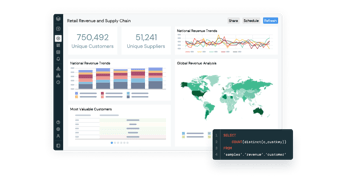Many companies are paying more than they should for their cloud infrastructure. Discover the 5 most common financial mistakes companies make in the cloud.
Deploying enterprise infrastructure in the cloud has many perks. However, many companies are not taking advantage of its real value because they operate in the cloud in the same way they did with legacy systems and on-premise services. We discuss the 5 most common mistakes organizations make when moving their infrastructure to the cloud environment.
More and more companies are migrating their infrastructure to the cloud to take advantage of the system integration and interoperability capabilities of cloud services.
However, moving from local servers to the cloud implies a change in mindset that compromises the company's IT and economic model. According to McKinsey, "traditional IT practices are based on owning IT instead of consuming it."
Without a doubt, the most significant advantages of cloud integration are scalability, flexibility, increased speed and greater data security.
On the other hand, cloud environments also ease data governance and data management policies, allowing the company's IT managers to have greater control over the assets owned.
The advantages are there, but not all companies are taking advantage of them, as they move their infrastructure to the cloud environment, but continue to operate with the same economic and IT models they used in the physical environment. Not only can this lead to disappointment for those companies that have invested heavily in moving their infrastructure to the cloud and are not getting the results they expected, but it can also compromise the effectiveness of cloud software and services.
Top 5 financial mistakes companies make when moving their infrastructure to the cloud
1. Short-term vs. long-term benefits
Companies that are considering moving to the cloud usually do a market research and a use case to estimate the cost and return on investment of the migration.
The problem is that, when making the use case, most companies only consider the cost reduction of leveraging cloud capabilities and the economic benefits associated with it: less hosting, storage and maintenance costs.
Companies do not map a long-term economic and development plan, which, over time, ends up making immediate benefits irrelevant because of the inefficiencies in usage of the cloud infrastructure.
The real economic benefits of the cloud are not immediate and require a progressive optimization plan to establish foundations, automate processes and improve current APIs, among other things.
Therefore, when a company is considering its move to the cloud, they should draw an economic study a year ahead and not focus only on the first months of the migration.
2. Paying for more capacity than they need
Physical infrastructure and on-premise systems operate on long-term capital expenditure models. That is, companies make large upfront investments in software, services and platforms that, over time, are amortized, as they only involve maintenance costs.
However, the cloud is much more dynamic and runs on operating expense models. In other words, pay for what you consume. Many companies contract cloud services without appropriate forecasts of the capacity they need. Cloud economics can become more profitable than legacy economics, as long as the company's demand for capacity is properly assessed.
The cloud allows organizations to pay for capacity when they need it, yet most companies are paying for capacity they don't need.
- Did you know that you can reduce the price of your cloud services by up to 75%? Find out how:
3. Poor cost estimation
This brings us to another economic hurdle organizations face when managing their cloud investment. Used to estimating traditional capital spending, companies are finding it difficult to estimate and forecast cloud infrastructure costs, as spending is much more dynamic and flexible.
According to McKinsey, most companies have mismatch rates of more than 20% in their cloud spending forecasts, with significant differences between planned and actual costs. This, in turn, complicates CFO's job, budget allocation and the overall financial balance.
Because cloud costs vary by usage, enterprises can optimize their economic forecasts by focusing on cost per user and basing them on a consumption model, rather than a per-service model. The elasticity and scalability of the cloud are ideal for enterprises to deploy economic models focusing on consumption. This allows organizations to more precisely match their demand to their needs and optimize cost allocation.
4. Expectations vs. reality
When companies study their migration to the cloud environment, they often make overly optimistic predictions regarding cloud consumption and usage. That is, they estimate that they will consume more capacity than they end up consuming. This, instead of lowering predicted costs, ends up inflating them, as companies hire far more resources than they end up consuming.
U.S. consulting firm McKinsey reports that most companies' cloud resource usage rate is below 30%.
Companies with an advanced, native cloud architecture can have cloud resource consumption rates above 60%. For this to happen, companies need an architecture capable of supporting that consumption. For example, auto-scaling compute resources can improve usage rates, but only if the API architecture is updated.
Organizations must consider upgrading their cloud architecture when anticipating the economic impact of moving to the cloud.
5. Migration of all workloads
The scalability of the cloud allows companies to do their own installations to save costs. However, moving all workloads to the cloud can backfire.
When migrating a workload to the cloud environment we must consider the type and scale of the workload. Some workloads may have lower costs on on-premises infrastructure. Therefore, those companies that have an environment with a small number of workloads of massive scale should be selective about moving them to the cloud.
Conclusion
Leveraging the real value of the cloud environment and avoiding the most common mistakes companies make when moving their infrastructure to the cloud requires a well-thought-out strategy.
Companies must keep in mind that the cloud is a constantly evolving environment and, as such, requires a constant strategic review of the economic model to avoid cost overruns and ensure optimal productivity of resource consumption.



